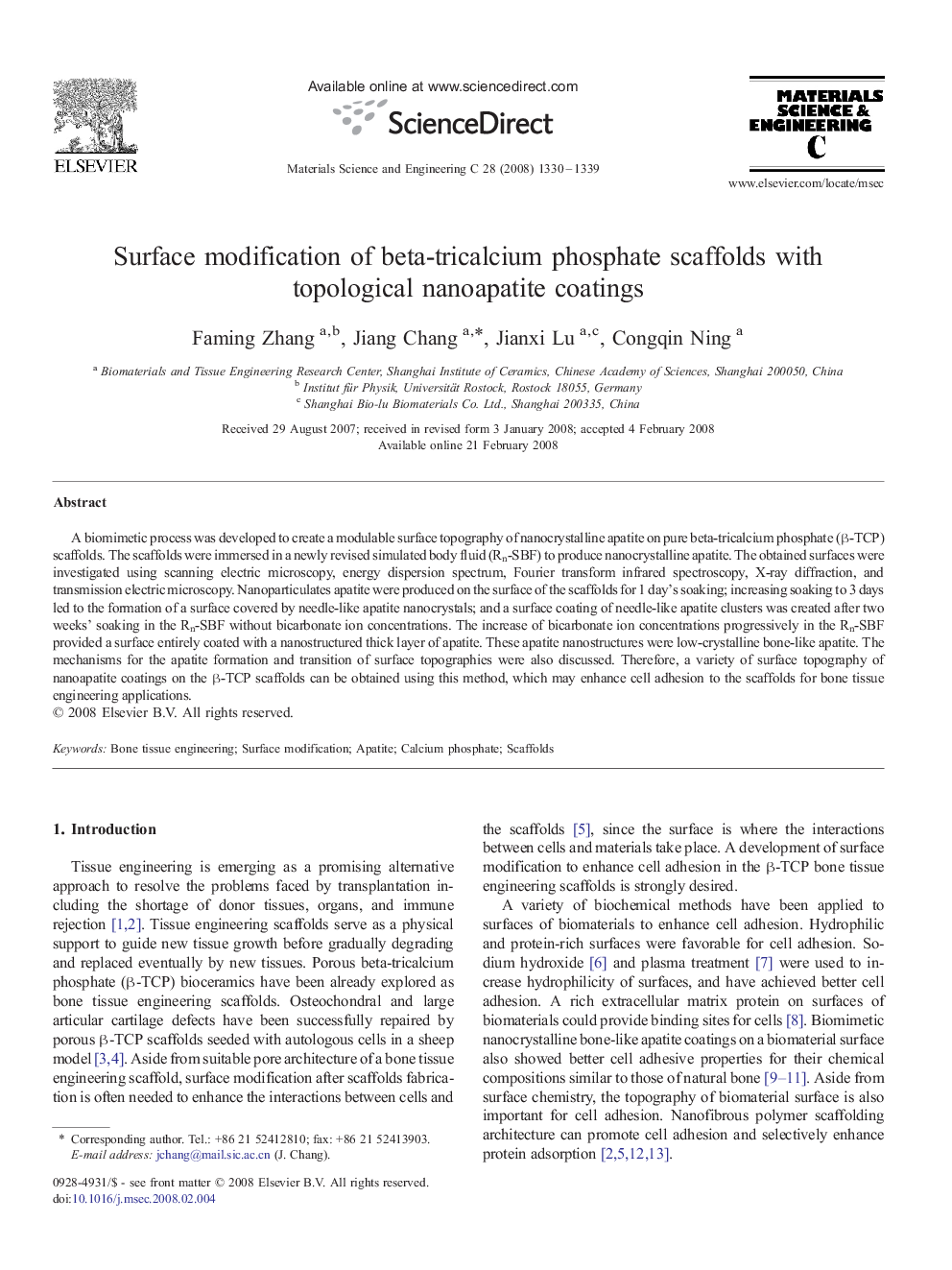| Article ID | Journal | Published Year | Pages | File Type |
|---|---|---|---|---|
| 1430833 | Materials Science and Engineering: C | 2008 | 10 Pages |
A biomimetic process was developed to create a modulable surface topography of nanocrystalline apatite on pure beta-tricalcium phosphate (β-TCP) scaffolds. The scaffolds were immersed in a newly revised simulated body fluid (Rn-SBF) to produce nanocrystalline apatite. The obtained surfaces were investigated using scanning electric microscopy, energy dispersion spectrum, Fourier transform infrared spectroscopy, X-ray diffraction, and transmission electric microscopy. Nanoparticulates apatite were produced on the surface of the scaffolds for 1 day's soaking; increasing soaking to 3 days led to the formation of a surface covered by needle-like apatite nanocrystals; and a surface coating of needle-like apatite clusters was created after two weeks' soaking in the Rn-SBF without bicarbonate ion concentrations. The increase of bicarbonate ion concentrations progressively in the Rn-SBF provided a surface entirely coated with a nanostructured thick layer of apatite. These apatite nanostructures were low-crystalline bone-like apatite. The mechanisms for the apatite formation and transition of surface topographies were also discussed. Therefore, a variety of surface topography of nanoapatite coatings on the β-TCP scaffolds can be obtained using this method, which may enhance cell adhesion to the scaffolds for bone tissue engineering applications.
